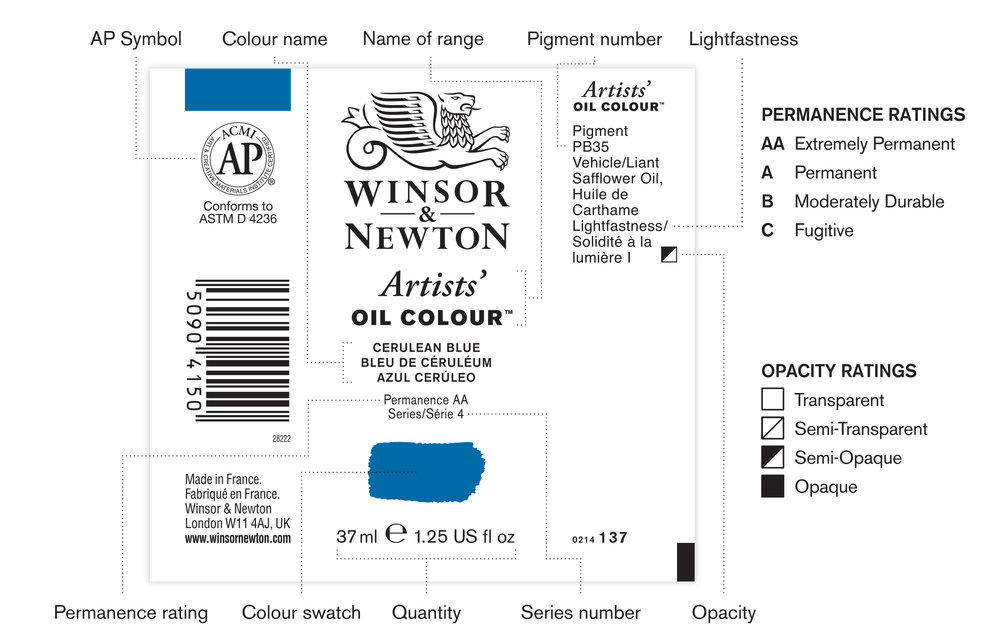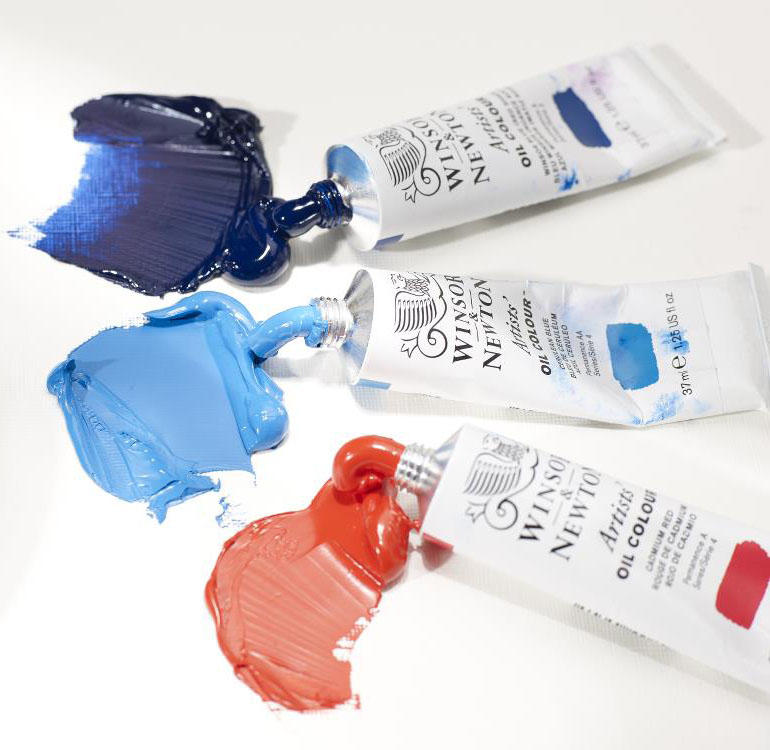WHAT'S THE DIFFERENCE IN OIL PAINT SERIES
HOW TO READ AN OIL PAINT TUBE LABEL
Colour name: The name of the colour. These are not necessarily unique to a range or medium. For instance, Cerulean Blue is available in watercolour and oil colour.
Series number: Indicates the relative price of the colour and is determined mainly by the cost of the pigment.
Permanence rating: The Winsor & Newton permanence classifications measure not only lightfastness but also film and chemical stability of the paint.
Pigment number: Each pigment can be identified by its Colour Index Generic Name. For example, Cobalt Blue is Pigment Blue 28, abbreviated to PB28. More than one pigment abbreviation indicates multiple pigments.
Opacity: Symbols are used to represent the transparency or opacity of a colour.
Lightfastness: Shown with an ASTM rating for the pigment. In this system, I is the highest lightfastness available and V is the lowest. Both ratings I and II are considered permanent for artists’ use.

EXPLAINING OIL PAINT SERIES
Oil paint series refer to different grades or levels of quality within a brand of oil paints. The main difference between the series of oil paints is the amount and quality of the pigments used in the production of the paint.
Generally, higher series oil paints have a higher concentration of pigments, which makes them more intense and vibrant in color. They also tend to have a higher degree of lightfastness, which means that the color will not fade over time when exposed to light. High series oil paints also tend to have a smoother and more consistent texture, making them easier to apply and manipulate.
Overall, the series of oil paints you choose depends on your budget, the quality you're looking for, and the intended purpose of your artwork. If you're just starting out or painting for fun, lower series oil paints may be a good choice. However, if you're a professional artist or want your artwork to last for many years, investing in higher series oil paints may be the best option.
Also, when checking the series number, there are more things to explore before you purchase your paint. You should always look at the actual pigment being used. The front of the tube may say one thing, while the pigments listed on the back of the tube are something different.
The first clue that the paint you choose is not a “pure” colour is the fact that the name of the colour has the word “hue” on it. When it comes to artist’s paint, the word “hue” references the fact that the paint is a mix of colours, not a single pigment.
Winsor & Newton showed Business Insider exactly what lengths they go to make their range of Artists’ Oil Colour, such as the the quality of their pigments and the high concentration they use them in.

Winsor & Newton showed Business Insider exactly what lengths they go to make their range of Artists’ Oil Colour, such as the the quality of their pigments and the high concentration they use them in.
DON'T FORGET! ALL WINSOR & NEWTON SERIES 4 ARTISTS' OIL PAINT NOW 40% OFF RRP
